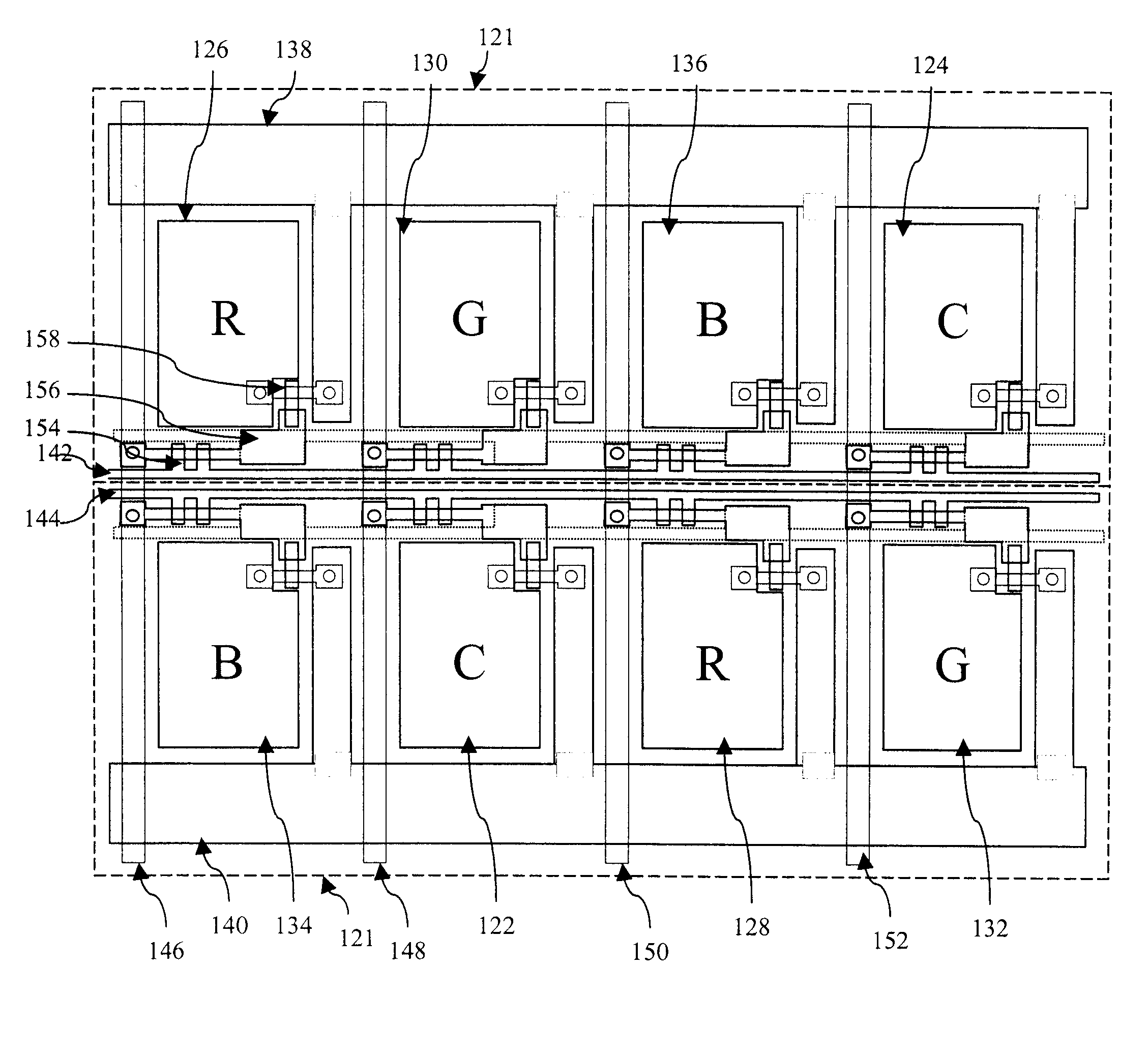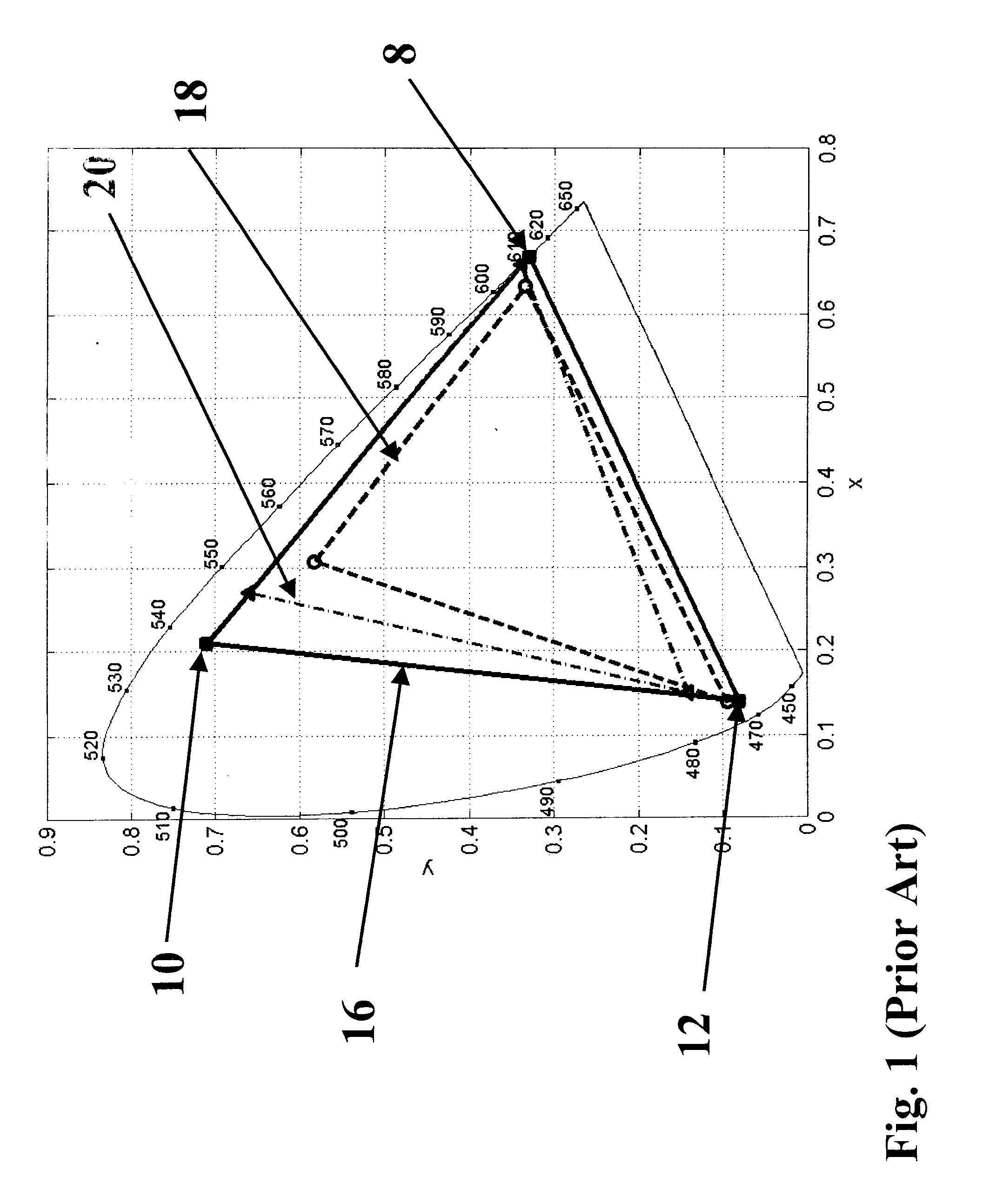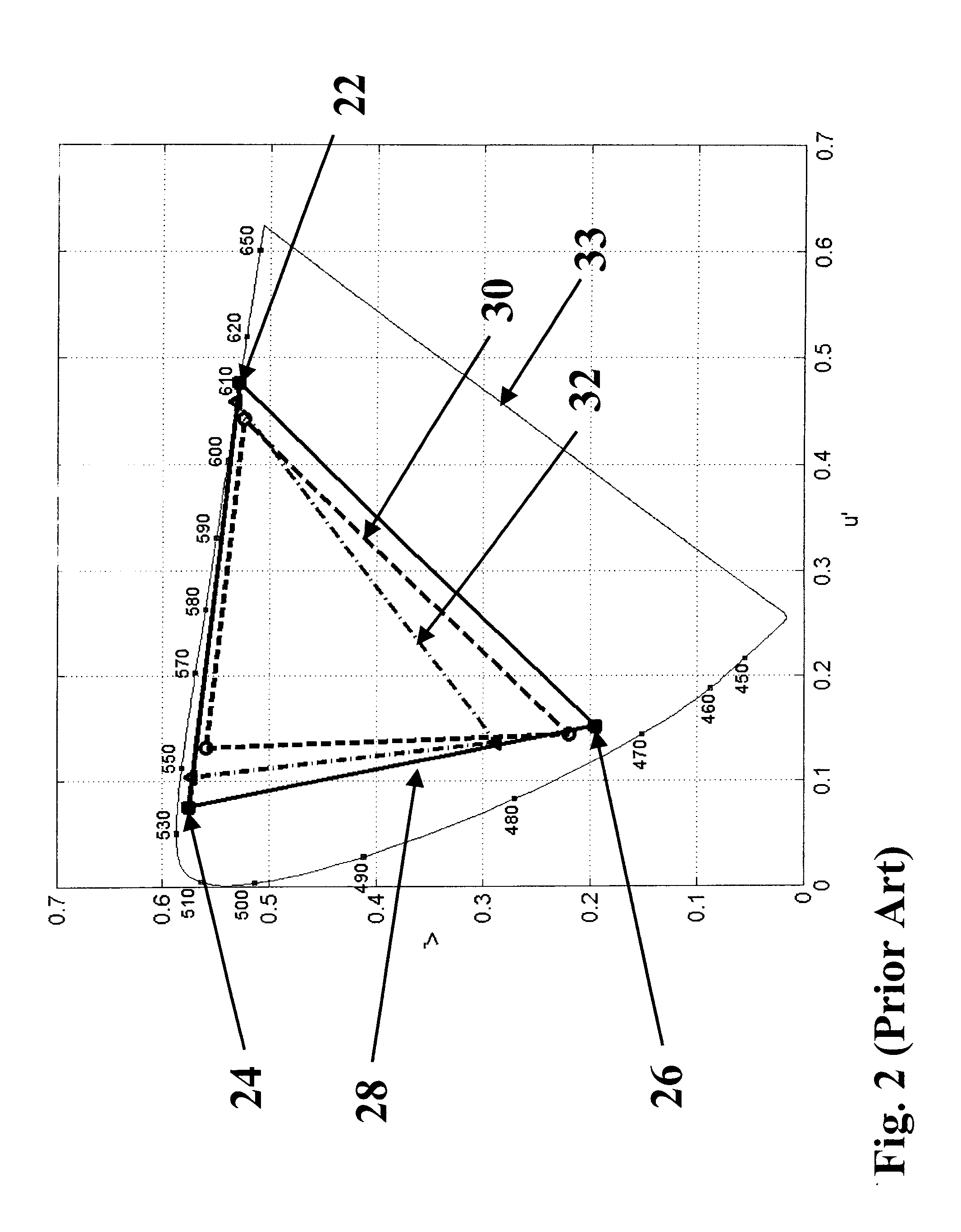Broad color gamut display
- Summary
- Abstract
- Description
- Claims
- Application Information
AI Technical Summary
Benefits of technology
Problems solved by technology
Method used
Image
Examples
Embodiment Construction
[0033]According to the present invention, the number of light emitting elements per pixel, also called subpixels, will be chosen based on the achievable color gamut, and other engineering considerations that pertain to the application of interest. These considerations include, but are not limited to, the ability to divide the area of the pixel into multiple subregions and the attendant electrical considerations, the loss of luminous efficiency due to reduced emitting area, the geometrical design of subpixel layout, and the like. Initially, we will address the issue of choosing the proper peak wavelengths for the emitters, given the predetermined number of emitters or subpixels. As employed herein, a peak wavelength for an emitter is the wavelength having the maximum radiance for that emitter.
[0034]A population of QD-LED emitters with spectral emission curve shape 34 as shown in FIG. 3, if manipulated through selection of materials and nanocrystal sizes such that the peak wavelength ...
PUM
 Login to View More
Login to View More Abstract
Description
Claims
Application Information
 Login to View More
Login to View More - R&D
- Intellectual Property
- Life Sciences
- Materials
- Tech Scout
- Unparalleled Data Quality
- Higher Quality Content
- 60% Fewer Hallucinations
Browse by: Latest US Patents, China's latest patents, Technical Efficacy Thesaurus, Application Domain, Technology Topic, Popular Technical Reports.
© 2025 PatSnap. All rights reserved.Legal|Privacy policy|Modern Slavery Act Transparency Statement|Sitemap|About US| Contact US: help@patsnap.com



